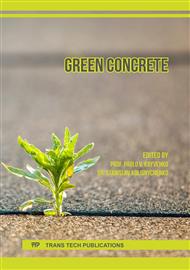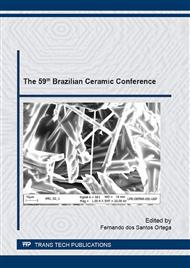p.307
p.313
p.318
p.323
p.331
p.336
p.341
p.346
p.351
Study of the Substitution of Natural Fine Aggregates by Stone Dust in the Concrete of the Portland Cement
Abstract:
The concept of sustainable construction throughout the building life cycle has motivated several studies on the application of waste to replace partially or totally some materials such as aggregates. This study evaluated the feasibility of stone dust use, replacing the natural sand in the production of structural concrete. In the initial stage it was carried out physical and chemical characterization of the applied materials and then molded cylindrical specimens with FCK 20, 25 and 30 MPa at 28 days, in compositions at levels of 10% stone powder, 30%, 50%, 100% e 100% with additive. After curing they were subjected to compressive strength tests and mechanical tests showed that the composition with 10% presented promising results.
Info:
Periodical:
Pages:
331-335
Citation:
Online since:
November 2016
Authors:
Keywords:
Price:
Сopyright:
© 2017 Trans Tech Publications Ltd. All Rights Reserved
Share:
Citation:



